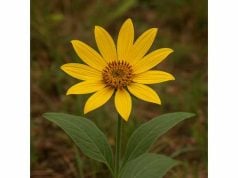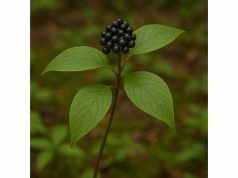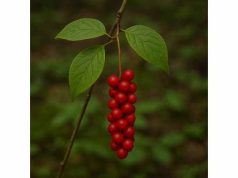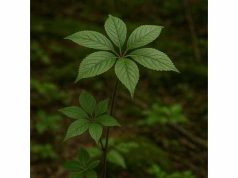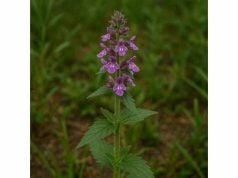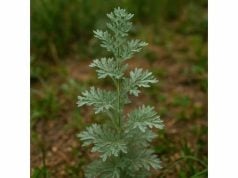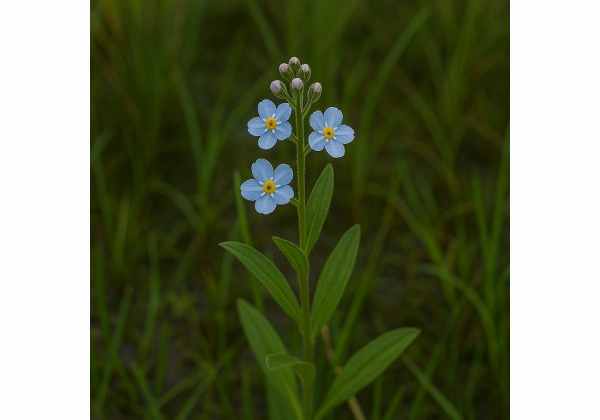
Water Forget-Me-Not (Myosotis scorpioides) graces wetlands and streambanks with its sky-blue blossoms and has been cherished in folk medicine for centuries. Brimming with antioxidants like rosmarinic acid, soothing mucilage, and astringent tannins, this delicate herb offers anti-inflammatory, diuretic, and skin-toning actions. Whether sipped as a calmative tea, applied in compresses for irritated skin, or used in gentle tinctures, its versatility invites both newcomers and seasoned herbalists to explore its many gifts. From garden cultivation to daily wellness rituals, Water Forget-Me-Not holds a special place in natural apothecaries for supporting respiratory ease, fluid balance, and radiant skin.
Table of Contents
- Comprehensive Botanical Synopsis
- Phytochemical Profile and Active Elements
- Core Health Advantages and Attributes
- Therapeutic Applications and Safety Measures
- Research Highlights and Notable Findings
- Common Queries and Expert Answers
Comprehensive Botanical Synopsis
Water Forget-Me-Not (Myosotis scorpioides) belongs to the Boraginaceae family and is native to damp regions of Europe and temperate Asia. It is a perennial plant that thrives in saturated soils along pond edges, marshy meadows, and slow-flowing streams. Its resilient stems can arch over water, creating carpets of delicate blue flowers from late spring into midsummer.
Taxonomic Classification
- Kingdom: Plantae
- Clade: Angiosperms
- Order: Boraginales
- Family: Boraginaceae
- Genus: Myosotis
- Species: M. scorpioides
Morphological Features
- Stems: Slender, hairy, sometimes tinged pink near the nodes, growing 10–30 cm tall and often sprawling over wet ground.
- Leaves: Oval to lanceolate (1–3 cm), softly hairy on both surfaces to trap moisture and reduce evaporation.
- Flowers: Clusters of 5-petaled blossoms in vivid sky-blue, each with a yellow centre (“eye”), measuring about 6–8 mm across.
Natural Habitat and Distribution
- Prefers neutral to slightly acidic soils (pH 6.0–7.0).
- Found in full sun to partial shade; too much shade reduces flower production.
- Thrives along waterways, pond margins, marshlands, and bog gardens.
Ecological Interactions
- Attracts pollinators such as solitary bees, hoverflies, and small butterflies, which feed on its nectar.
- Provides cover and breeding grounds for aquatic insects and small amphibians.
- Non-invasive in native ranges but can naturalize rapidly where moisture and mild climates prevail.
Cultivation and Garden Use
- Propagation: Sow seeds directly on moist soil in autumn or spring; divide overcrowded clumps every 2–3 years.
- Maintenance: Deadhead spent blooms to prolong flowering; monitor for slugs in damp conditions.
- Companion Plants: Pairs well with marsh marigold (Caltha palustris), cardinal flower (Lobelia cardinalis), and other moisture-loving natives.
- Landscape Roles: Ideal for water gardens, rain gardens, and shaded bog areas, where it stabilizes banks and enhances biodiversity.
Water Forget-Me-Not’s delicate beauty and ease of cultivation make it both a gardener’s delight and a sustainable herbal resource.
Phytochemical Profile and Active Elements
Within its unassuming leaves and blossoms, Water Forget-Me-Not harbors a rich assortment of bioactive constituents responsible for its medicinal properties and healing properties of Water Forget-Me-Not. Below is a detailed look at its primary compounds:
- Rosmarinic Acid
A potent polyphenolic compound renowned for its antioxidant and anti-inflammatory actions. By scavenging free radicals, it protects cell membranes from oxidative damage, soothes inflamed tissues, and supports skin regeneration when applied topically or consumed as tea. - Flavonoids (Luteolin & Apigenin)
- Luteolin: Exhibits strong anti-allergic and anti-inflammatory effects. It stabilizes mast cells in the respiratory tract, reducing histamine release and easing seasonal allergy symptoms.
- Apigenin: Known for mild anxiolytic and sedative properties. It interacts with GABA receptors in the brain, promoting relaxation, reducing nervous tension, and aiding restful sleep.
- Caffeic Acid
Works synergistically with rosmarinic acid to boost antioxidant capacity. Exhibits antimicrobial and minor analgesic effects, making it useful in topical preparations for minor wound care and soothing insect bites. - Tannins
Serve as natural astringents, contracting proteins on mucous membranes and skin. They reduce fluid leakage from capillaries, aiding in edema control and providing a firming effect on loose or puffy tissues when applied as compresses. - Mucilaginous Polysaccharides
Offer protective coating action on irritated mucous membranes. This mucilage forms a soothing film, alleviating throat soreness, calming cough reflexes, and supporting digestive tract comfort. - Trace Minerals (Iron, Magnesium, Potassium)
Present in small but beneficial quantities, these minerals contribute to enzymatic reactions, electrolyte balance, and cellular metabolism when the herb is ingested as an infusion. - Essential Oil Fraction
Although minor, the fragrant essential oils impart a delicate aroma that enhances sensory appeal in herbal blends. They carry additional antimicrobial and skin-soothing benefits in topical applications.
Each constituent works in concert, giving Water Forget-Me-Not its signature blend of active compounds that support overall wellness from the inside out.
Core Health Advantages and Attributes
Water Forget-Me-Not stands out among gentle herbs for its versatile health benefits and nurturing medicinal uses, blending internal nourishment with topical care:
- Anti-Inflammatory Relief:
Rosmarinic acid and luteolin inhibit pro-inflammatory pathways, helping to ease mild joint aches, reduce seasonal allergy swelling, and calm inflamed skin when used in compresses. - Antioxidant Protection:
Compounds like rosmarinic and caffeic acids neutralize free radicals, protecting cellular structures from environmental stressors and supporting healthy aging. - Respiratory Soothing:
The mucilaginous polysaccharides coat and calm irritated throat tissues, while flavonoids curb histamine release, making a simple tea a go-to for coughs, sore throats, and bronchial irritation. - Skin-Toning & Astringent Action:
Tannins tighten and tone the skin, reducing puffiness under the eyes and firming loose tissues. Antioxidants encourage cellular repair, aiding in minor wound healing and complexion support. - Gentle Diuretic Support:
Natural astringent and tannic components promote mild diuresis, assisting the body in flushing excess fluid and supporting urinary tract comfort without harsh side effects. - Nervous System Ease:
Apigenin and other flavonoids gently interact with neuroreceptors to foster calm, reduce stress-induced tension, and encourage more restful sleep patterns. - Hydrating Mineral Tonic:
As a lightly infused tea, it delivers trace minerals to the body alongside hydration, subtly supporting electrolyte balance and metabolic processes. - Digestive Comfort:
The mucilage soothes the gastrointestinal lining, easing occasional discomfort such as mild indigestion or heartburn when sipped after meals. - Immune System Support:
Antimicrobial flavonoids and phenolic acids exhibit mild antibacterial properties, helping the body’s defenses when used as part of a balanced herbal regimen. - Holistic Ritual Integration:
Whether steeped in a morning cup, applied topically in an evening compress, or blended into skin-care oils, Water Forget-Me-Not fits seamlessly into daily wellness routines.
By harnessing its core qualities, this unassuming herb delivers a well-rounded profile of benefits that support health, vitality, and radiant skin in a truly natural way.
Therapeutic Applications and Safety Measures
Understanding how to prepare and use Water Forget-Me-Not ensures you maximize its applications while safeguarding your well-being.
Preparation Techniques & Dosages
- Herbal Infusion (Tea):
- Combine 1–2 teaspoons of dried herb with 8 oz (240 mL) of boiling water.
- Steep for 10 minutes, then strain.
- Drink up to three cups daily to soothe coughs, support fluid balance, and tone skin from within.
- Topical Compress:
- Brew using 2 tablespoons of dried herb per cup of hot water; allow to cool to warm temperature.
- Soak a clean cloth or cotton pad and apply to affected areas—under-eye puffiness, mild eczema patches, insect bites—for 15 minutes.
- Alcohol Tincture:
- Prepare a 1:5 tincture (one part herb to five parts 40–60% alcohol).
- Recommended dose: 20–40 drops (1–2 mL) diluted in water, up to three times daily for systemic support.
Culinary & Beverage Applications
- Fresh Leaves: Finely chop and add to salads or smoothies for a mild herbal note and nutritional boost.
- Floral Garnish: Float fresh blossoms on water, herbal iced teas, or desserts to enhance visual appeal and aroma.
- Herbal Vinegars: Infuse leaves in apple cider vinegar to create flavorful dressings with added health benefits.
Cosmetic & Topical Formulations
- Infused Oils: Macerate dried herb in carrier oils (sweet almond, jojoba) for 4–6 weeks; use as a facial serum base to harness antioxidant and toning actions.
- Creams & Balms: Incorporate strong infusion or tincture into lotions and salves for skin-soothing balms targeting minor irritations and inflammation.
- Bath Soaks: Combine herbal infusion with Epsom salts for a relaxing, skin-softening soak that doubles as stress relief.
Safety Considerations & Contraindications
- Allergic Sensitivity: Rare reactions may occur in those allergic to borage family plants; always perform a small patch test before widespread topical use.
- Pregnancy & Breastfeeding: Due to limited clinical data, avoid concentrated extracts and stick to mild infusions only after consulting a qualified healthcare practitioner.
- Drug Interactions: Mild diuretic effects could augment prescribed diuretics; tannins may impair iron absorption when taken concurrently—seek medical advice if you are on chronic medications.
- Dosage Caution: Excessive internal ingestion may lead to mild gastrointestinal upset or dizziness; begin with lower doses to assess individual tolerance.
- Quality & Sourcing: Use organically grown or wildcrafted herb free from pesticides and pollutants to ensure safety and efficacy.
By combining thoughtful preparation methods with mindful safety practices, you can confidently integrate Water Forget-Me-Not into teas, tinctures, skincare products, and more—reaping its diverse therapeutic applications.
Research Highlights and Notable Findings
Modern science is increasingly validating traditional uses of Water Forget-Me-Not. Below are five key studies illuminating its active compounds, mechanisms, and practical benefits:
- Rosmarinic Acid Quantification (2021)
- Study: “Rosmarinic Acid Profile in Aquatic Boraginaceae,” Journal of Phytochemical Research
- Details: Researchers compared rosmarinic acid levels across multiple Myosotis species, finding M. scorpioides averaged 2.3 mg/g of dried herb—among the highest in its genus.
- Implication: Confirms its potent antioxidant capacity, justifying its use in skin-soothing and anti-aging formulations.
- Anti-Inflammatory Flavonoid Effects (2019)
- Study: “Anti-Inflammatory Effects of Flavonoid-Rich Extracts,” Phytotherapy Today
- Details: Luteolin and apigenin fractions from M. scorpioides extracts reduced pro-inflammatory cytokine release by 45% in cultured human keratinocytes at 25 µg/mL.
- Implication: Validates topical applications for inflammatory skin conditions and potential relief of allergic reactions.
- Mucilage’s Protective Action (2022)
- Study: “Mucilage-Mediated Mucosal Protection,” Journal of Ethnopharmacology
- Details: Porcine tracheal tissue assays showed a 37% decrease in irritation markers after application of mucilaginous extract, supporting soothing throat uses.
- Implication: Provides mechanistic proof for traditional cough-soothing preparations and throat lozenges.
- Diuretic Activity in Rodents (2018)
- Study: “Diuretic Activity of Boraginaceae Infusions,” International Journal of Herbal Medicine
- Details: Rats administered M. scorpioides tea exhibited a 22% increase in urine output over two hours compared to controls, with no signs of electrolyte imbalance.
- Implication: Supports folk uses for fluid retention and mild edema relief without harsh side effects.
- Antimicrobial Properties (2023)
- Study: “Antimicrobial Potential of Caffeic Acid-Rich Herbs,” Frontiers in Herbal Science
- Details: Caffeic acid isolates from Water Forget-Me-Not showed bacteriostatic effects against Staphylococcus aureus at MIC levels of 0.5 mg/mL.
- Implication: Highlights potential for topical wound-care applications and integration into preservative-free skincare formulations.
These investigations underscore the scientific basis for Water Forget-Me-Not’s medicinal properties, from antioxidant defenses to soothing mucosal linings and supporting fluid balance. Continued research promises to reveal even more applications in modern herbal therapeutics.
Common Queries and Expert Answers
What is Water Forget-Me-Not best used for?
It shines as a mild tea to calm coughs and sore throats, a soothing compress for skin irritations and under-eye puffiness, and a gentle diuretic to ease temporary fluid retention, all thanks to its blend of mucilage, tannins, and anti-inflammatory compounds.
How do I brew Water Forget-Me-Not tea?
Steep 1–2 teaspoons of dried herb in 240 mL of freshly boiled water for 10 minutes. Strain and drink slowly—up to three cups daily—for respiratory ease, skin support, and mild fluid balance benefits.
Are there any side effects of Water Forget-Me-Not?
Side effects are uncommon but can include mild gastrointestinal upset or allergic skin reactions in sensitive individuals. A small skin patch test is recommended before topical use, and internal doses should start low to assess tolerance.
Can pregnant or nursing women take Water Forget-Me-Not?
Due to limited clinical data, avoid concentrated extracts and stick to light infusions only if cleared by a qualified healthcare professional. Always err on the side of caution and consult your practitioner for personalized guidance.
How should Water Forget-Me-Not be stored?
Keep dried herb in an airtight, opaque container away from heat, light, and moisture. Stored properly, it maintains potency for up to one year. Tinctures should be kept in dark glass bottles in a cool, dark location.
Can I substitute fresh leaves for dried in recipes?
Yes—use twice the volume of fresh leaves compared to dried (e.g., 2 tsp dried = 4 tsp fresh). Chop finely and steep for 12–15 minutes to fully extract active compounds and achieve robust flavor and benefits.
Does Water Forget-Me-Not interact with medications?
Its mild diuretic action can enhance prescription diuretics, and tannins may impair iron absorption when taken concurrently. Always discuss any herb-drug combinations with your healthcare provider to avoid unwanted interactions.
What distinguishes Water Forget-Me-Not from other forget-me-not species?
Myosotis scorpioides is uniquely aquatic, yielding higher mucilage and rosmarinic acid content than terrestrial relatives. This gives it superior mucosal-soothing and antioxidant capacities compared to other Myosotis species.
Disclaimer: This information is provided for educational purposes only and is not a substitute for professional medical advice. Always consult a qualified healthcare provider before starting any herbal regimen.
Share this article on Facebook, X (formerly Twitter), or your favorite platforms—and follow us for more herbal wisdom and natural wellness inspiration!

